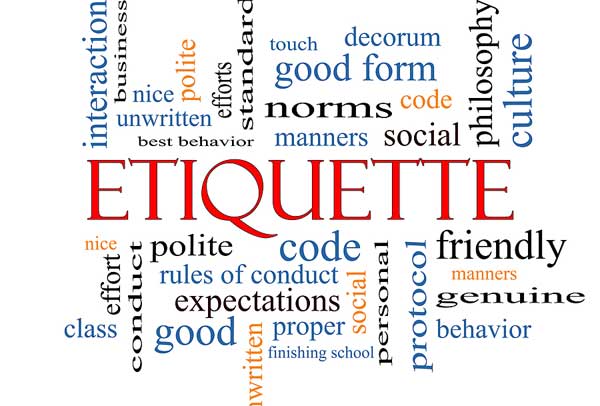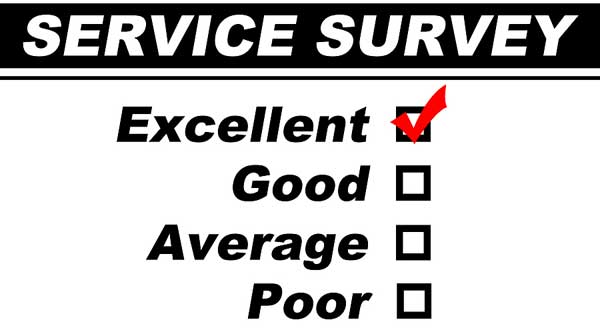School customer service is more than answering phone calls or resolving in-person concerns. It’s about providing a seamless, accessible, and user-friendly experience for parents, students, and the community—and much of that experience happens online. Schools that prioritize customer service through their websites build trust, enhance communication, and strengthen relationships with families.
Parents often judge a school’s level of care, communication, and professionalism based on its website, making it a critical tool for modern education. Websites act as the school’s digital front door, open 24/7, offering information, answers, and support whenever needed. In this blog, we will explore the importance of school customer service through the lens of effective website management, focusing on three key principles: the power of words, handling difficult situations, and practicing excellent digital etiquette.

1. The Power of Words: How Website Content Shapes Customer Service
As the article Customer Service: The Power of Words highlights, the way schools communicate matters. Words have the power to inform, inspire, and influence perceptions. Schools can leverage this power to create websites that communicate clarity, confidence, and care.
Why Website Content Matters
Your school’s website serves as a central hub for important information. From announcements and event details to policy updates and academic resources, your content should be clear, concise, and accessible. When parents visit your website, they are often seeking answers—answers that will impact their children’s education and their relationship with the school. If the information is outdated, disorganized, or full of jargon, frustration quickly follows.
The Power of Positive Communication
Positive language on your website helps build trust and set a welcoming tone. For instance:
- Replace: “Parents who miss registration deadlines will not be accommodated.”
- With: “To ensure every student has a smooth start to the year, please complete registration by [specific date]. Let us know how we can assist you!”
This small change reframes the message from negative to helpful, empathizing and encouraging rather than reprimanding. Schools that adopt positive, customer-service-oriented messaging make parents feel valued, supported, and heard.
Download our FREE eBook: How to Create Sensational School Customer Service.
Avoid Information Overload
A cluttered website overwhelms visitors. Avoid dumping too much information on a single page or forcing users to dig through layers of confusing navigation. Instead, prioritize key messages, break down content with headings and bullet points, and ensure everything is easy to read. Schools should also update their websites regularly to reflect the latest events, programs, and contact information. Nothing damages trust more than outdated content that causes confusion.
By harnessing the power of thoughtful, positive communication, schools transform their websites into tools for empowerment and support.

2. Facing Challenges: How to Handle Frustrated Parents Online
The second article, Customer Service: Facing the Fury, emphasizes the importance of responding to concerns—even when they come from upset or frustrated parents. For schools, the website can play a key role in mitigating these challenges.
Why Frustration Often Starts Online
Parents may feel frustration for various reasons:
- They cannot find the information they need (e.g., registration forms, school calendars).
- Confusing website navigation wastes their time.
- Essential updates are missing, leading to misunderstandings.
When parents encounter these hurdles, frustration can escalate quickly, leading to negative perceptions about the school’s ability to communicate effectively. It is also an indication of failed school customer service.
Proactively Reducing Frustration Through the Website
To avoid these issues, schools can proactively design their websites with the end-user in mind:
- Create Clear Navigation: Group information logically (e.g., “Parent Resources,” “Calendars,” “Contact Us”).
- Include FAQs: Address common parent questions to save time and prevent confusion.
- Offer Search Functionality: A robust search bar allows users to quickly locate what they need.
- Post Updates Promptly: Ensure newsletters, schedules, and announcements are up to date.
Responding to Parent Frustration
Despite your best efforts, some parents may still face issues. The school website can become a tool for support and reconciliation in these situations:
- Provide Contact Information: To help frustrated parents contact the right person directly, include the names, phone numbers, and emails of administrators, teachers, and support staff.
- Offer Online Support Forms: Consider creating a form where parents can submit questions, concerns, or feedback. A quick acknowledgment of their submission goes a long way.
- Post Policies Transparently: Clearly outline processes like dispute resolution or complaint handling so parents know what to expect.
By addressing concerns head-on and offering helpful resources, schools demonstrate their commitment to resolving frustrations and maintaining positive relationships.

3. Practicing Digital Etiquette: Minding Your P’s, Q’s, and Netiquette
The final article, Customer Service: Minding Your P’s, Q’s, and Netiquette, reminds us that how we interact online matters just as much as in-person interactions. Good digital etiquette—often referred to as “netiquette”—sets the tone for healthy and respectful communication.
Netiquette on School Websites
A school’s website is not only an information center but also a platform for communication. Netiquette applies to the content schools post, the tone they use, and the way they engage with parents online. For example:
- Tone Matters: Use a friendly and professional tone in all website content, avoiding sarcasm or overly formal language that may alienate readers.
- Check for Errors: Typos or grammatical mistakes can undermine a school’s credibility. Review content carefully before publishing.
- Respect User Privacy: Do not post sensitive information online, such as student records, private parent feedback, or unapproved photos.
Interactive Website Features and Etiquette
Many school websites include interactive features like comment forms, discussion forums, or social media feeds. These tools are excellent for fostering engagement, but they require careful monitoring to ensure respectful interactions. Schools can set clear guidelines for online behavior, such as:
- Avoiding negative, inflammatory, or disrespectful comments.
- Encouraging constructive feedback and positive interactions.
- Responding to online comments with courtesy and professionalism.
When schools model good netiquette, they set the tone for the entire school community to engage respectfully and productively.

Practical Steps to Improve School Customer Service Through Your School Website
By combining the principles of powerful communication, proactive problem-solving, and digital etiquette, schools can take practical steps to improve their website as a customer service tool:
- Audit Your Current Website: Review your website regularly to ensure all content is accurate, up to date, and user-friendly.
- Simplify Navigation: Group resources logically so parents can find what they need quickly.
- Adopt a Parent-Centered Approach: Ask yourself, “What do parents need to know, and how can we present it clearly?”
- Add Contact Information Everywhere: Make it easy for parents to reach the right person when they need support.
- Train Staff: Ensure that those managing website updates understand best practices for communication and customer service.
- Gather Feedback: Use surveys or website analytics to identify areas for improvement.

Conclusion: Your Website is Your School’s First Line of Customer Service
In the fast-paced world of education, schools cannot afford to overlook the importance of customer service. A well-managed website acts as the school’s digital ambassador, providing timely information, fostering positive relationships, and addressing concerns before they escalate. By focusing on the power of words, tackling frustration proactively, and adhering to digital etiquette, schools can transform their websites into powerful tools for connection and support.
Parents want to feel confident that their children’s schools are organized, communicative, and caring. A responsive, informative website sends exactly that message. In doing so, schools build trust, increase parent engagement, and ultimately create a stronger school community.
In the end, your school’s website isn’t just about technology—it’s about people. It’s about making families feel valued, heard, and supported every step of the way. When they do, students excel, which is all our goal, right?
Contact School Webmasters to get help implementing improved school customer service using your school website and social media strategies. You can reach us at 888-750-4556 or get a quote from our website.


